Fayzulla Khujayev House
Fayzulla Khujayev House museum
The House museum of Faizulla Khodjaev is an excellent illustration of the Bukharan architectural style of the late 19th century. Faizulla’s family house is located in the famous quarter of Bukhara, called Gozien and is a little walk away from the most known sights but it is part of the experience to walk through the maze like streets of the old town in order to reach it. In early times the area around it was occupied by members of the palace aristocracy and other wealthy people.
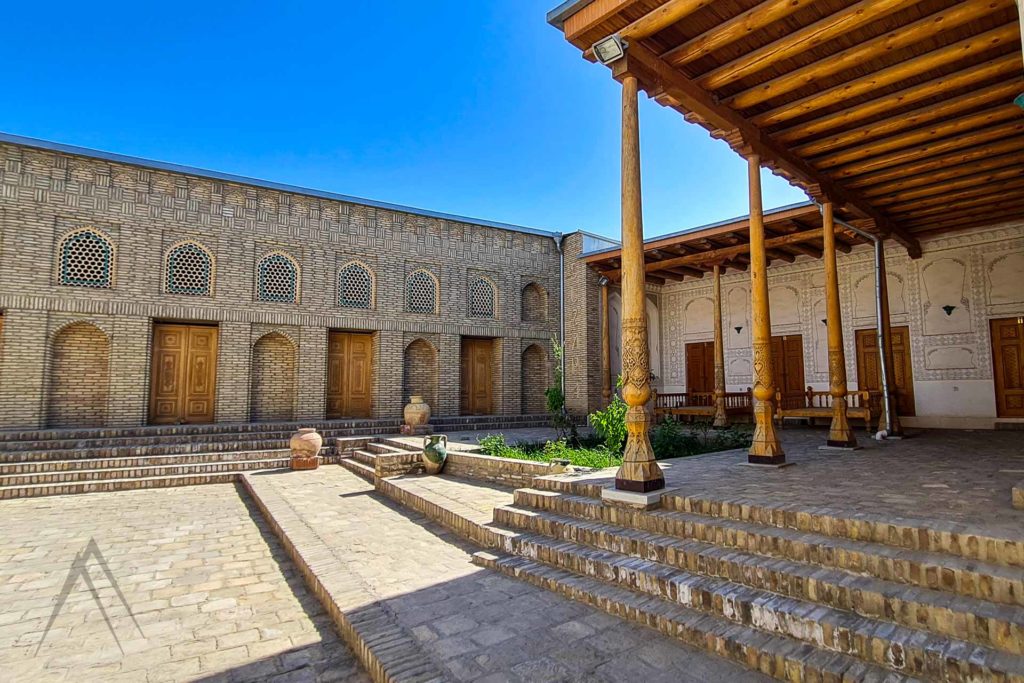
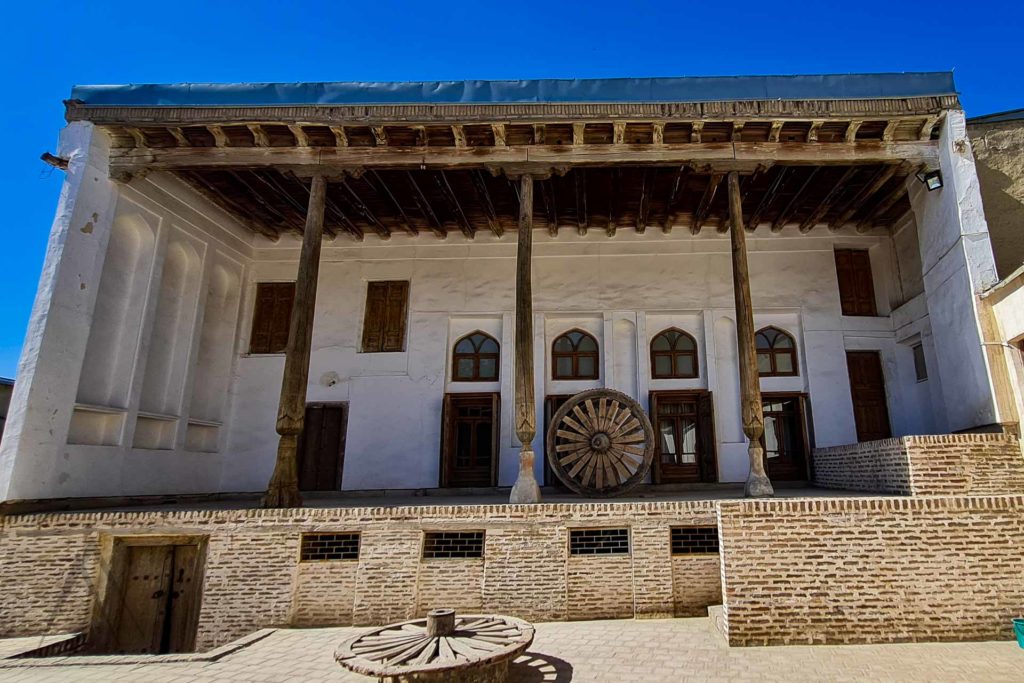
Fayzulla Khujayev
Faizulla Khodjaev was one of the most notable political characters in the history of Bukhara in the early 20th century. He was the leader of Hasidism-Maecenas as well as a fighter for equal rights. For his views and statements, he was repressed in 1938. Faizulla Khodjaev’s father was a wealthy Bukhara merchant who gave his son an excellent education and Faizulla even studied in Russia.
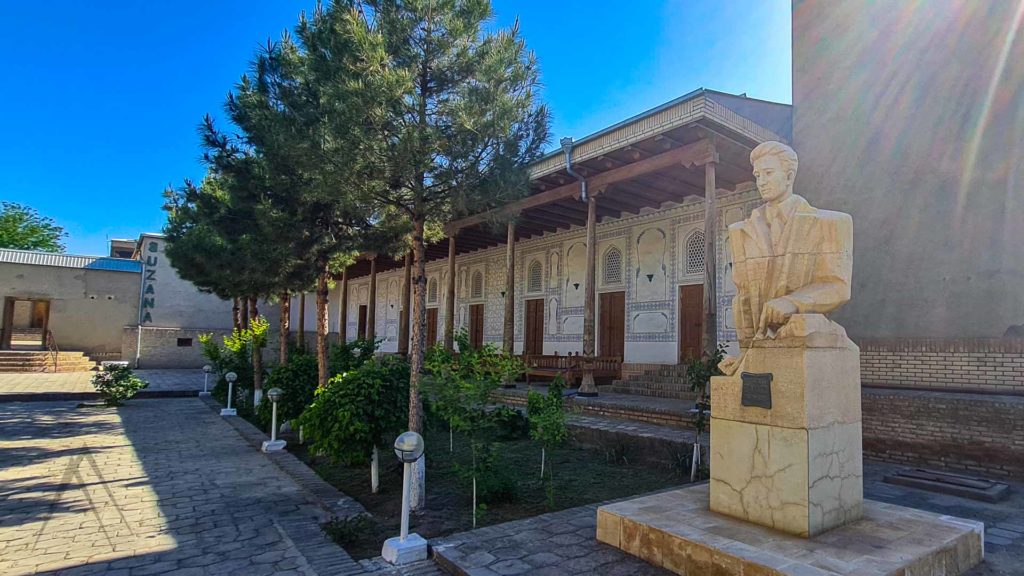
In 1913, Faizulla Khodzhaev returned to Bukhara, where he quickly joined the Hasidism. From 1916 to 1920, Faizulla was one of the leaders of the young Bukhar party, which was facing the inhumane activities of the Emir of Bukhara. Faizulla Khodjaev along with his friend and colleague A. Fitrat organized a demonstration, the purpose of which was to encourage the government to adopt a new constitution and to implement reforms that improve the lives of the people of Bukhara.
As soon as Central Asia became a part of the Soviet Union, Faizulla Khodjaev participated in the management of the region but during Stalin’s mass repression, Khodjaev was executed.
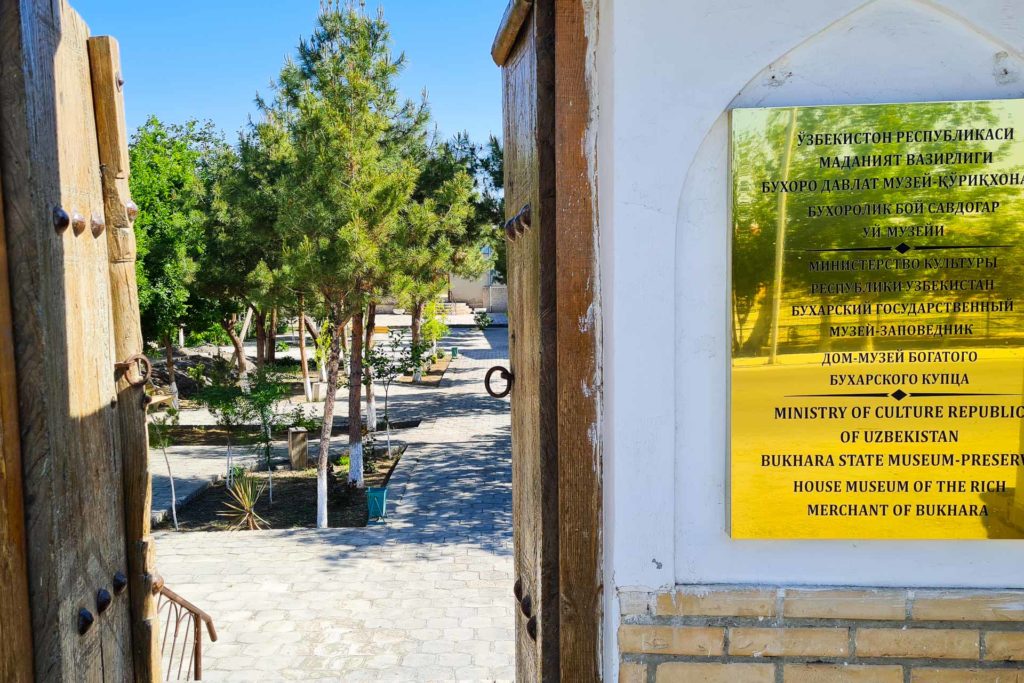

The Fayzulla Khujayev house museum
The house was built in 1891 by his father, Ubaidullah. Fayzulla lived here until 1925 when the Soviets converted it into a school. Meticulous restoration of the elegant frescoes, latticework and Bukhara-style ceiling beams (carved, unpainted elm) have all been returned to their former glory. The house has a large garden and is divided into two halves: the outer (for men) and inner (for women). The living area has a large reception room for guests, and summer and winter rooms with beautiful murals in the traditional Bukhara style.
Women part of the Fayzylla Khyjayev house
The female courtyard (harem) is even better restored, with winter quarters and stove on the left and summer quarters and is cooled by a high iwan, on the right. There is little furniture to clutter the small rooms as all ornaments were kept in niches in the wall and the family slept on mattresses, as they do today.
During the Soviet invasion, the rich ganch ornamentation of the walls was covered in clay, to protect the decoration and partly to protect the family as well, but today the walls shine again. There are some interesting photos here, including some of the bombed city after Soviet troops attacked in 1920 and the ensuing proclamation of the Bukharan People’s Republic in Kalon Square.
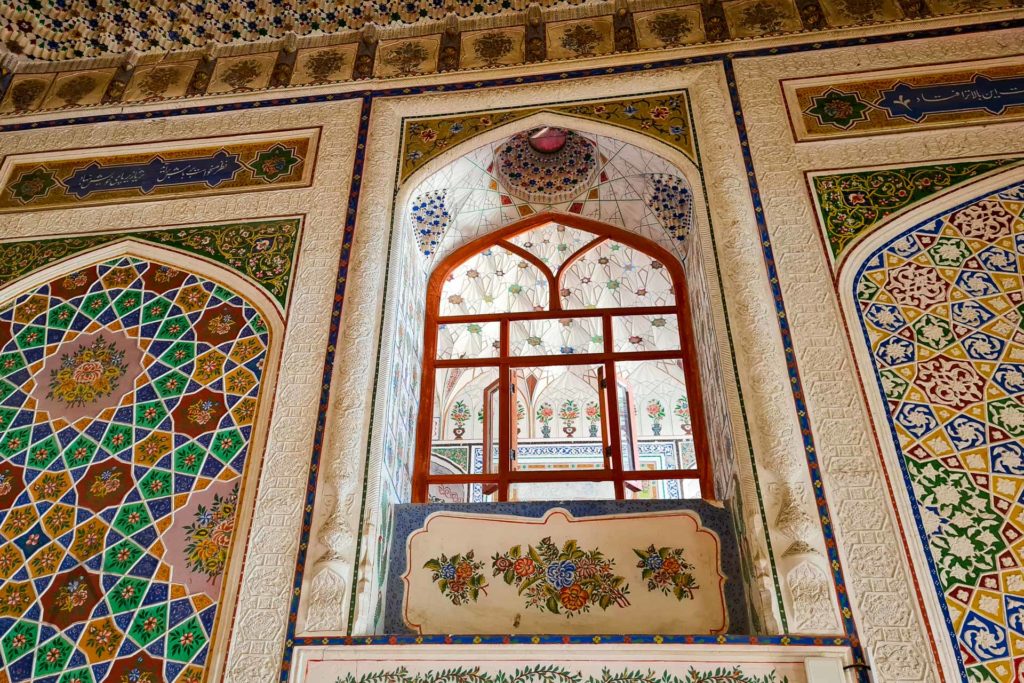
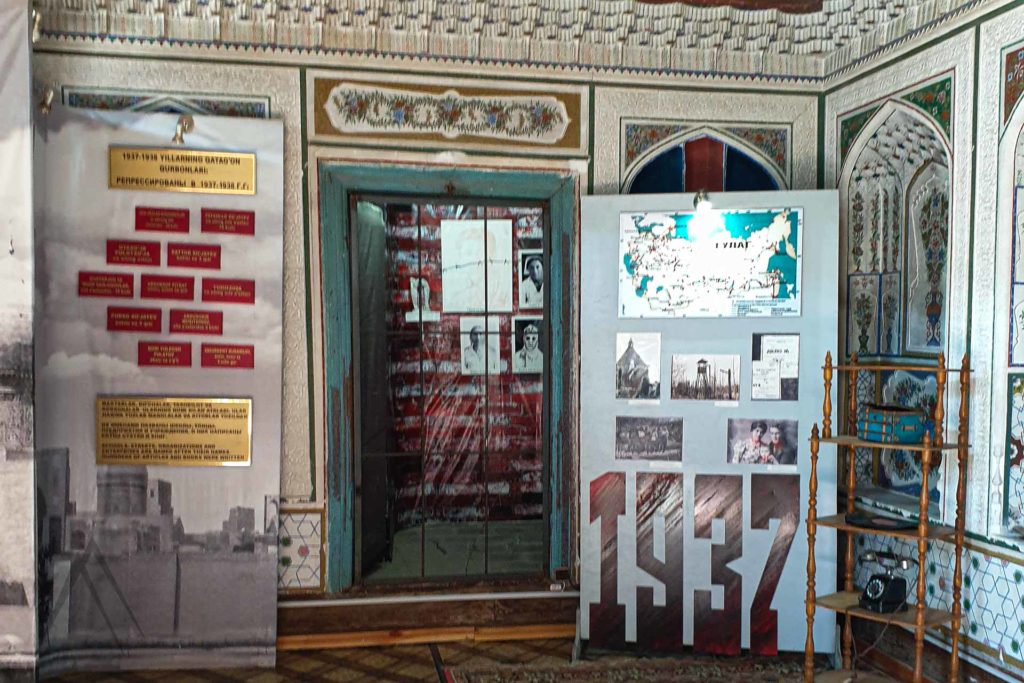
In 1996, which is the anniversary of Fayzylla Khyjayev’s birth and 30 years after official rehabilitation, a small museum was opened in Khodjaev’s honor, inside the guestroom of the male courtyard. Archive photos and newspapers (look for the 1930 copy of Bukharan Proletariat) document the Red Army’s arrival and Khodjaev’s rise and fall all the way to his show trial in Moscow. His wife died in Siberian exile, but a grandson still survives in Tashkent.
sights near FAYZULLA KHUJAYEV HOUSE MUSEUM
Page updated 7.10.2021